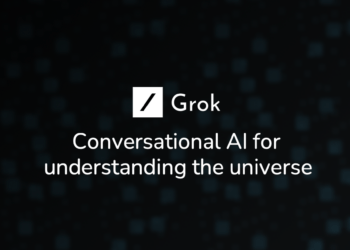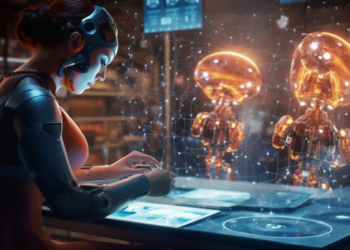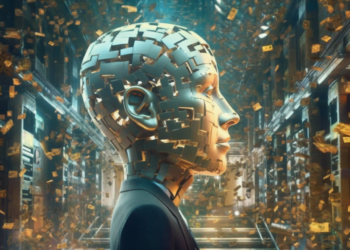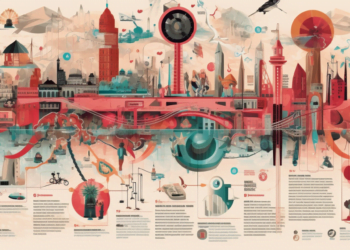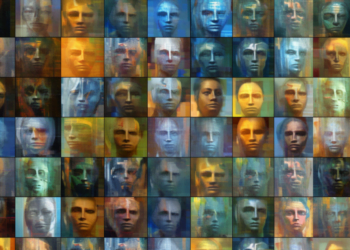Artificial neural networks (ANNs) form the core of what is commonly known as “Deep Learning,” a subdiscipline of artificial intelligence (AI) that draws inspiration from the neural processes of the human brain to construct algorithms capable of recognizing complex patterns and performing cognitive tasks.
Foundations and Architecture of Neural Networks
The architecture of an ANN is based on an interconnected set of nodes or “neurons” distributed across several layers. A standard architecture includes an input layer, one or more hidden layers, and an output layer. Each neuron is connected to others via weighted links, where the weight adjusts the signal transmitted between neurons.
Recent Advances in Learning Algorithms
Machine learning has undergone significant transformations with the introduction of new algorithms, such as those used in deep learning training. Novel techniques like stochastic gradient descent with momentum or Adam contribute to optimizing the weight adjustment process in the training of deep networks.
Evolution of Activation Functions
Activation functions have evolved from sigmoid and hyperbolic tangent to more complex functions like the rectified linear unit (ReLU) and its variants – Leaky ReLU, Parametric ReLU, and Exponential Linear Unit (ELU) – which have proven to improve convergence and mitigate the vanishing gradient problem in deep architectures.
Diversification of Architectures
In the field of AI, various specialized architectures have emerged:
- Convolutional Neural Networks (CNNs): They excel in visual tasks due to their ability to preserve the spatial hierarchy of data.
- Recurrent Neural Networks (RNNs): They stand out in sequential tasks, such as language comprehension and generation, for their ability to maintain an internal state or “memory”.
- Attention Mechanisms and Transformers: Developed as an improvement over RNNs, they have revolutionized natural language processing by allowing the model to focus on specific parts of the input data.
Innovations in Neural Network Architectures
Recent research has resulted in the design of novel architectures like Capsule Networks, which aim to improve the hierarchical representation of visual spaces, and Graph Neural Networks (GNNs) that extend the application of ANNs to structured data such as graphs.
Practical Applications
Computer Vision
Computer vision has seen notable improvements with the advent of CNNs. A flagship example is Google DeepMind’s AlphaGo, which integrated convolutional networks to interpret the Go board and defeat the world champion.
Natural Language Processing (NLP)
NLP has been revolutionized by models like OpenAI’s GPT-3 and Google’s BERT, which use transformer-based architectures. They have improved the understanding and generation of text, achieving unprecedented results in translation, automatic summarization, and text generation tasks.
Autonomous Vehicles and Robotics
Self-driving vehicles utilize a combination of CNNs and RNNs to process sensory data and make navigation decisions. Leading companies in this space, such as Tesla and Waymo, are case studies for the effective application of ANNs in highly complex scenarios.
Convergence with Other Disciplines and Future Challenges
The intersection of ANNs with other areas such as computational genomics and computational chemistry is opening new research fronts. The recent collaboration between DeepMind and the Francis Crick Institute demonstrated how AlphaFold can predict the three-dimensional structure of proteins, a task considered one of the great challenges of biology.
Challenges and Future Directions
One of the current challenges is the creation of ANNs that are more computationally efficient and less dependent on large volumes of labeled data. Emerging techniques such as semi-supervised learning and reinforcement learning are contributing in this direction.
On the other hand, the issue of interpretability of ANNs, especially Deep Networks, remains open. The search for methods for the explainability and transparency of models is crucial both for their ethical adoption and for their continuous improvement.
Conclusions
The evolution of ANNs has marked a before and after in numerous areas of human knowledge. As a tool for simulating human intelligence, their potential for transformation seems unlimited. However, fulfilling these promises involves addressing both technical challenges and ethical questions. AI is constantly evolving and requires critical and profound analysis to ensure its sustainable and beneficial development for society.


